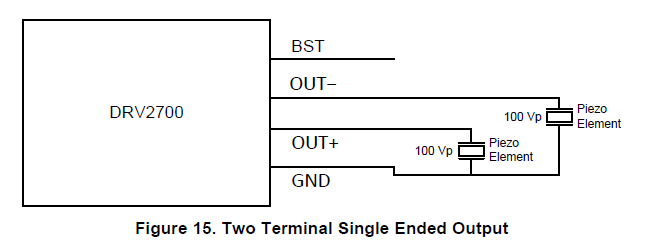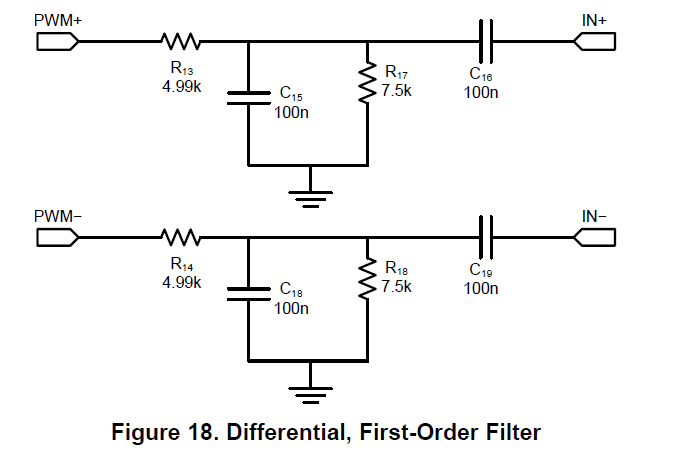Other Parts Discussed in Thread: DRV2700,
DRV2700 EVM Output circuit as follows:
My set up as follows:
- Gain: 28dB
- Output voltage set up :23 V 50 kΩ/ JP2 Open /JP3 Open /JP4 Open
- fs:2.5KHz.
- Duty: 50%
Test wavefrom as follows:(no load): CH2:OUT1 CH3: OUT2
my question:
The noise for output waveform causes the buzzer to produce a different sound during the on time.
Whether the output waveform can be modified by modifying the filter. The circuit as follows,Or there are other ways to solve.




